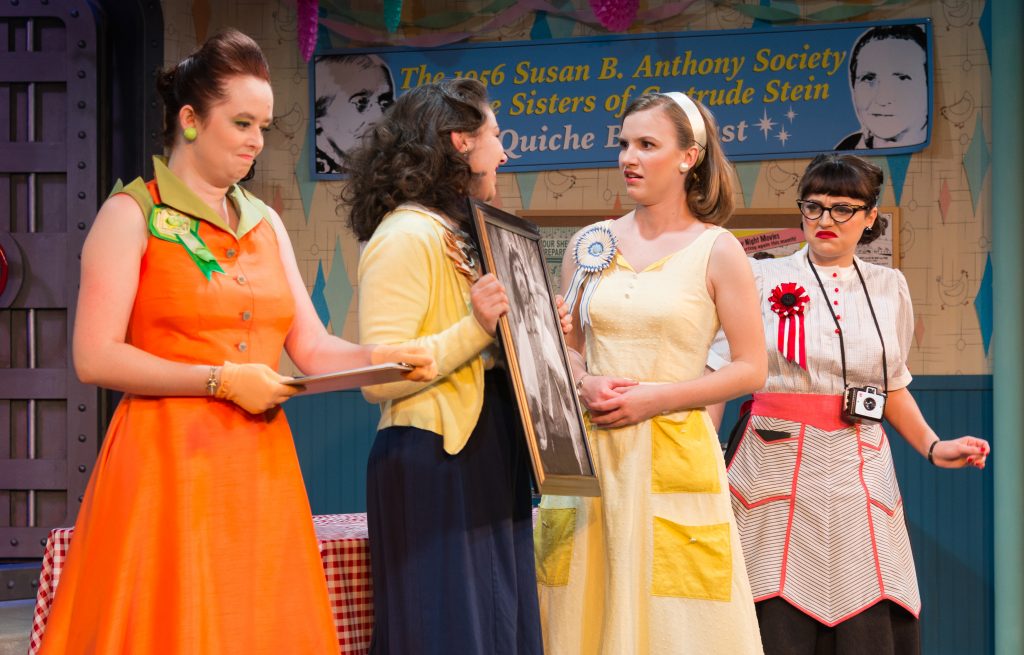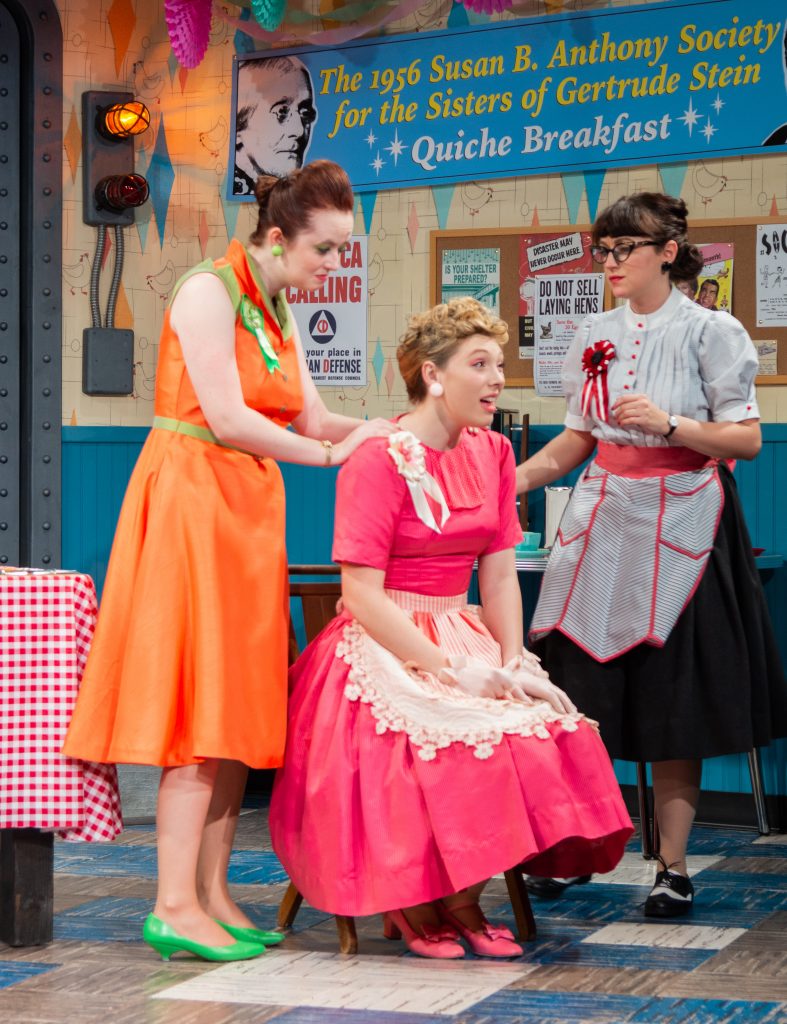
Chrys Weedon | Entertainment Editor
Opening on Nov. 8, “5 Lesbians Eating a Quiche” is Western’s fall production, and it has all the lesbians anyone could hope for.
Set in 1956, in a community center basement-turned-bunker, this sapphic comedy follows a group of “widows” who call themselves “The Susan B. Anthony Society for the Sisters of Gertrude Stein.” The occasion: an annual quiche breakfast/bake-off.
Whisking the audience along, the five main characters — Vern, Wren, Lulie, Ginny and Dale — carry on with what seems to be a regular society meeting, although they have a cult-ish obsession with eggs. Each character seems to be driven by manic anxiety, along with the manners and passive aggressiveness of a classic ‘50s housewife.

Suddenly, these quiche-eating ladies are given quite a shock, as a bomb siren blares and the iconic flash of light overtakes the room. Soon, the women are left to decide what comes next for the sisters — all of whom will be trapped in the bunker for the next four years. Oh yeah, and they forgot all the quiche outside.
There is a large amount of audience participation and interaction, which keeps the energy high throughout the production. Everyone in the audience is referred to as “sisters,” and are brought into the story as it develops.
The director of this production is theater professor Kent Neely.
“I wanted to do something fun and something that had strong roles for women,” Neely said, “a friend in South Carolina had seen it at a theatre festival and told me about it. Once I read it, I thought it would be great to do.”
The cast and crew have been working hard on “5 Lesbians” since the first Monday of the term.
“It was fun because they are all such talented actors. I believe they developed a very strong ensemble and I had fun giving them suggestions that they could then take and run with,” commented Professor Neely.
The show runs for about 75 minutes. Future shows can be caught Nov. 14, 15, 16, and 17. Western students get in free with their student ID.
Contact the author at howlentertainment@wou.edu
Photo courtesy of Ashlynn Norton








